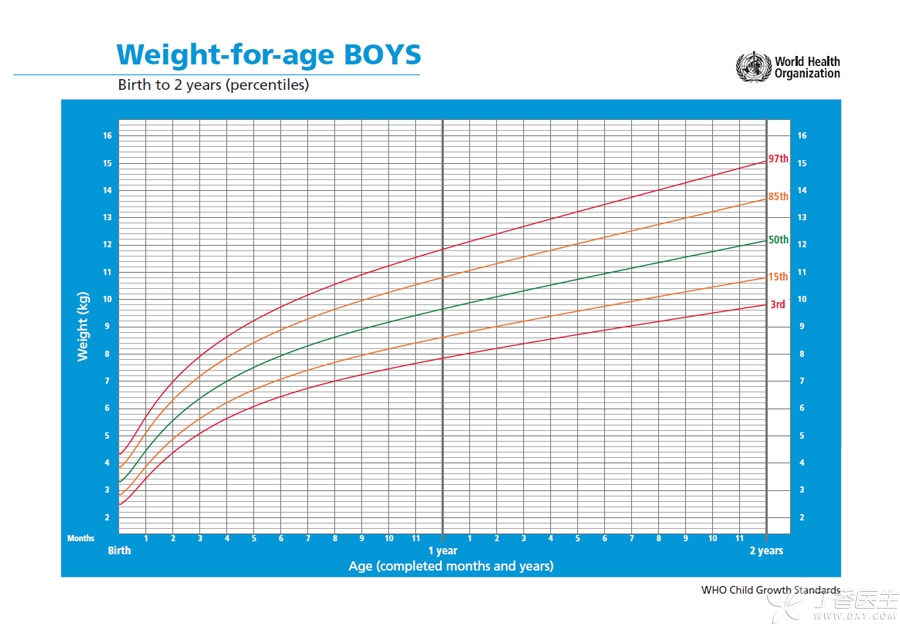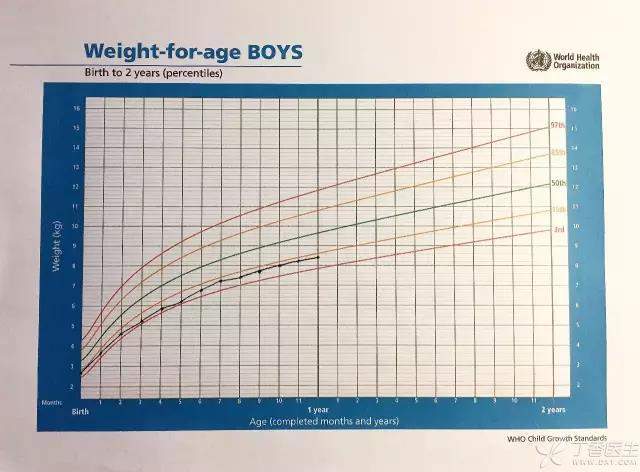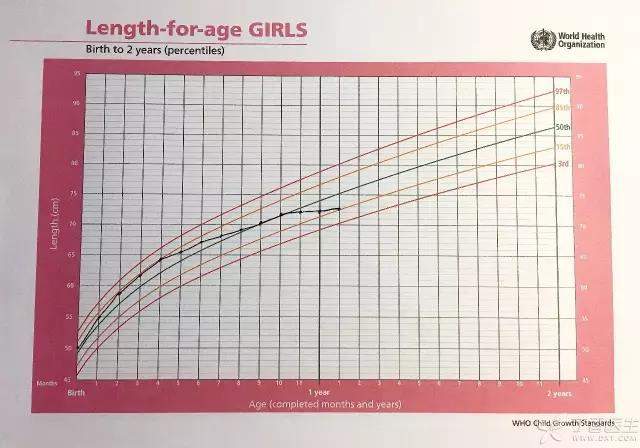
There are always treasure parents asking Dr. Clove:
My baby looks so thin, is it malnourished?
My baby is X months old and weighs only XX kg. Do you want to see a doctor?
In fact, parents who have such doubts often [worry too much].
Today, Dr. Clove told everyone a good way to judge the baby’s development: look at the growth curve. Learn this trick, parents don’t have to be so anxious.
Development, see [growth curve]
What is the growth curve? The simple definition is this:
The growth curve is a standard curve of children’s height and weight drawn up by scientific researchers according to the statistical results by counting the height and weight of most healthy children.
Well, to put it bluntly, the growth curve is a [normal range] that indicates the growth and development of the baby. Moreover, this [normal range] is very wide, within the range of 3% ~ 97%, that is, within the range of the red curve below, which can be regarded as normal.
Example of Growth Curve: Boy Weight Chart
▼

What do you think of [growth curve]?
I believe many parents will be the first to find out the age of their baby and see what level the baby is at when they see such a picture.
In fact, we should pay more attention to the overall trend of the growth curve than the value of a point. Come on, follow Dr. Clove to do this:
The data (height or weight) obtained from each physical examination of the baby are traced on the corresponding chart to obtain the growth curve of the baby.
For example, if the family is a male baby, the weight is measured every month. Then, the baby’s weight data can be traced on the boy’s weight growth curve according to the age of the month to obtain the baby’s weight growth curve.
Knowing how to draw the line, the next step is to look at the overall trend:
1. Always in a higher or lower position, normal
If the baby is always at a higher or lower position in the curve, the development trend is roughly parallel to the reference curve within the range of 3% ~ 97%, and the baby’s development is normal.
For example, this example of male treasure’s weight development:

Photo Source: Provided by Author
This is a low-level but stable development.
If the baby is not sick, eats and sleeps well, is energetic, and develops normally in sports, language and other aspects, there is no what to worry about. This is a normal development.
2. Slowly slide, normal
If the baby’s body is not uncomfortable with what and his mental state is good, the slowly declining growth curve is also normal.
For example, some babies may wake up frequently at night, drink a lot of milk and grow fat at the beginning, which is a relatively high position on the weight growth curve.
Then the baby can sleep well, the night milk is not so much, the body adjusts itself, the growth curve will slowly decline.

3. It suddenly grows for a lot or a few months, which is normal.
The baby’s growth and development have obvious fast and slow rhythm, not uniform speed.
The child grows very fast in the first 3 months and slows down obviously in 3 ~ 6 months. After one year old, the child’s growth and development speed becomes slower.
Therefore, in the first 3 months, the baby can watch the weight gain every week, while in the first 6 months, the weight change every month can be observed, while the older baby needs to watch the weight change for half a year or even one year.
Parents should stop worrying about the problem of unhappy weight growth when the baby is older. After 6 months, if the baby is in a normal mental state and does not get sick, it is normal for him not to grow very long for several months, so he does not need to worry too much.
4. Deviate from the original position, abnormal
If the child’s growth suddenly deviates significantly from his original growth curve position, it is unhealthy whether it rises or falls.
Attention should be paid to the sudden and obvious decline in the baby’s growth curve, which may indicate that the child has diseases. However, if there is a sudden and obvious rise, parents should not be happy to grow too early and too fast, which will be at the expense of other development, especially the development of metabolic system, and will not be conducive to long-term health.
For example, this example of female treasure’s height development:

This is a deceleration development deviating from the original position.
After 4 months, the growth rate slowed down, and after 10 months, the curve fell off one grid, breaking away from the original development trend. From the above figure, the child’s health and development status need to be evaluated by a doctor. On the one hand, check whether the child is sick, and on the other hand, check whether the child’s feeding is appropriate.
Don’t forget the uniqueness of children.
Dr. Clove would also like to remind everyone that every child is unique, the growth curve is not growing fast, and there are some small fluctuations that do not need to be too nervous.
Looking at the growth curve, there are two points in this tense situation:
-
The growth curve deviates from the original position, showing ups and downs.
-
The growth curve is particularly low, below 3%, or particularly high, above 97%, i.e. Beyond the red line.
If these situations occur, parents should consider whether the baby has hidden health problems or improper feeding. At this time, it is time to take the baby to see a doctor.
